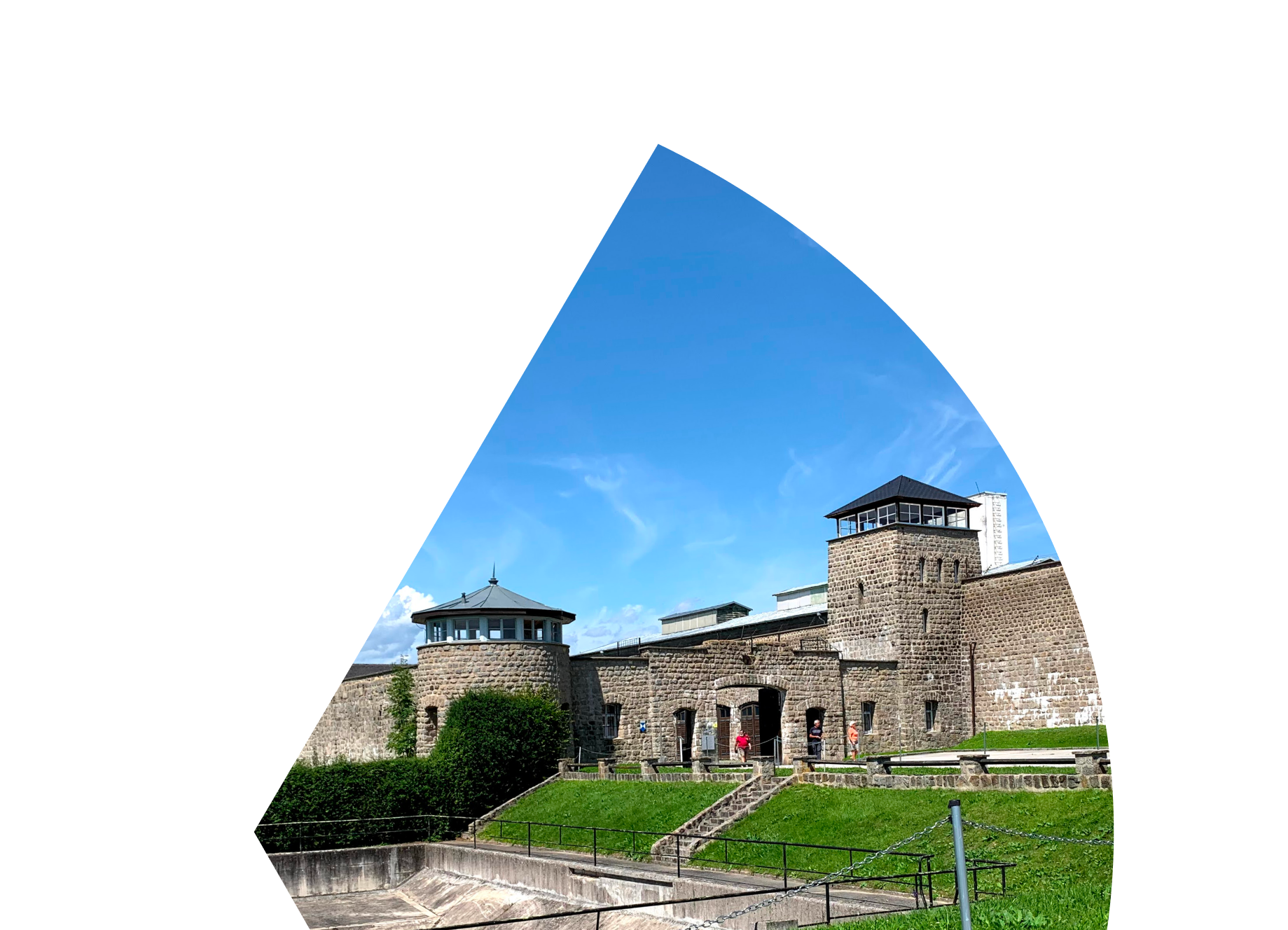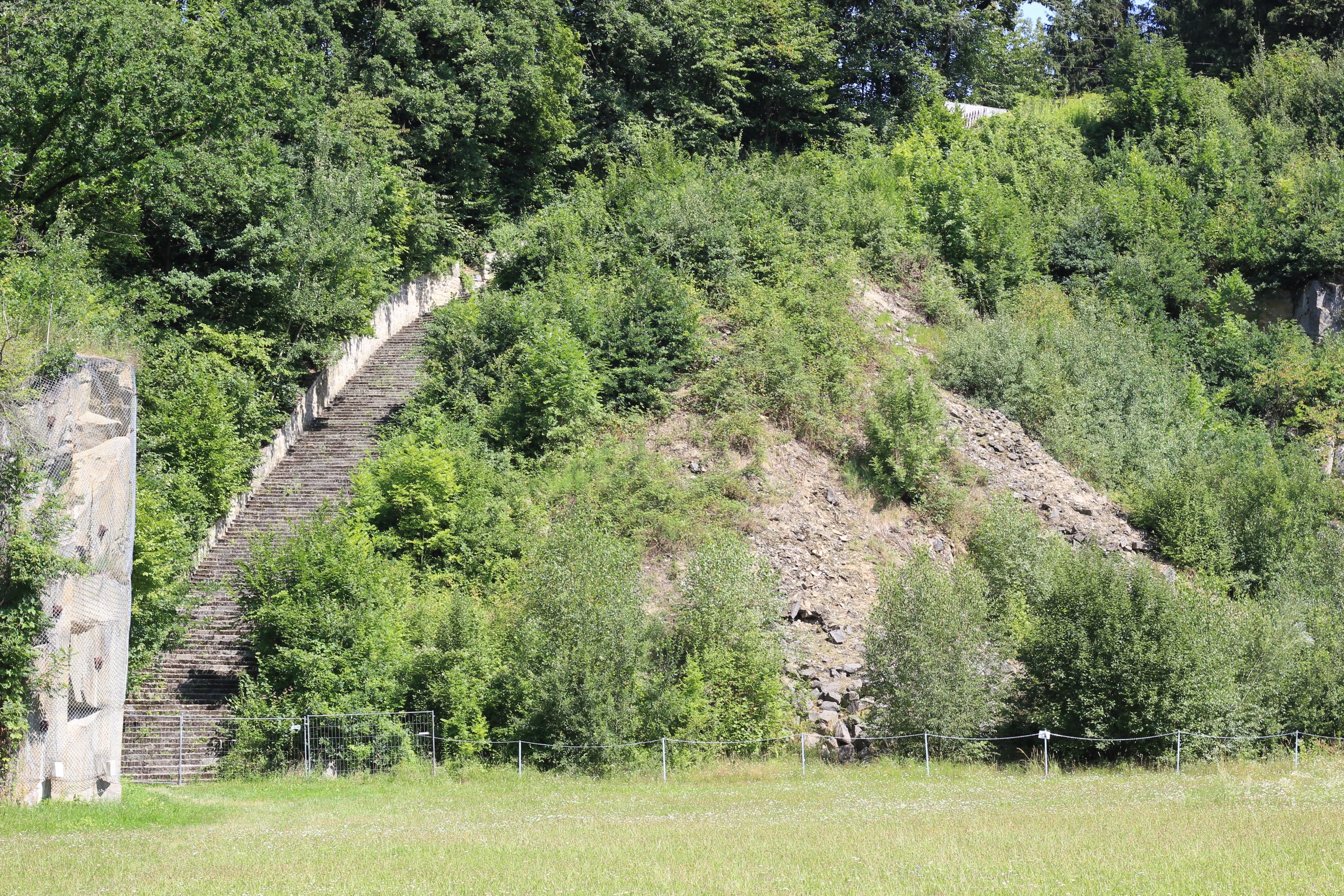
Mauthausen
Learn about the history of Mauthausen and some of its sub-camps and the IHRA’s involvement with safeguarding them.

Learn about the history of Mauthausen and some of its sub-camps and the IHRA’s involvement with safeguarding them.
Mauthausen was built inside a purpose-built fortress which still exists today and comprises many original camp buildings and structures. It is a few kilometers away from the village of Mauthausen.
The site was opened in August 1938 as a forced labor camp. The camp eventually grew to include facilities for the SS as well as barracks, an infirmary, brothel, gas chamber, and crematorium. The Mauthausen complex included many satellite camps and forced labor concerns in the area. Many prisoners were forced to work in industries such as granite quarrying and airplane construction.
Many different groups of people were imprisoned at Mauthausen, including Jews as well as Roma, Sinti, LGBTQ+ people, Jehovah’s Witnesses, and political opponents of the Nazis. Prisoners came from all over Europe, including large groups of Polish, Spanish, and Italian inmates. In late April 1945, the camp leadership began to prepare for evacuation. Some prisoners were forced on death marches, while others were left at the camp to die. On 5 May, the camp was liberated by American forces. Due to missing archives, an exact death toll for Mauthausen does not exist. According to the memorial complex, at least 190,000 people were imprisoned at Mauthausen; over 90,000 people died, though the actual number is likely higher. Archival sources indicate that at least 38,000 of the dead were Jewish.
By the end of the war, the Mauthausen complex included 101 camps that stretched from southern Germany throughout Austria to the border of Yugoslavia, and contained about 85,000 prisoners. Of these, the IHRA has engaged with Gusen and Gunskirchen through its Safeguarding Sites IHRA Project.
The modern village of Gusen was built on the footprint of the camp destroyed in 1945. While several original buildings survive, they are used as private residences today.
The Gunskirchen camp operated for only three weeks from within a forest before being liberated by US forces. Several thousand prisoners from Mauthausen were taken there in the spring of 1945. All that survives today are the bases of some concrete hut platforms, and a scatter of textiles and artifacts on the forest floor.
Mauthausen is unusual because the site was turned over to the Austrian government by the Soviet occupying force in 1947, specifically for the purpose of memorialization. Some buildings, such as the medical barracks, had been burned soon after liberation, but a core of structures remained. Soviet forces briefly used some of these as barracks.
The camp opened as a memorial site in 1949. Survivors played a major role in designing interpretation and memorialization; from 1970 to 2013, when a new permanent exhibition opened, the camp’s main exhibition was one designed by a survivor. Over the years, different parts of the memorial have been refurbished and opened to visitors. Some areas, such as the former gas chamber, are preserved in their original state; other buildings hold exhibitions on various themes. In 2003, a dedicated visitor center was built just outside the camp complex.
There is a memorial plaza of memorials and monuments just outside the former main entrance. Since 1949, dozens of different victim groups have designed and paid for monuments; these include national groups as well as political, ethnic, and other identity-based ones. Smaller memorial plaques to various groups and individuals are clustered inside the complex itself, especially along an interior wall and inside the former crematorium.

In 2021, the Safeguarding Sites IHRA Project team visited Mauthausen, Gusen, and Gunskirchen to observe examples of good practice and to hear about and see the challenges that the sites face today. This visit helped them improve the draft IHRA Charter for Safeguarding Sites, which the team was then refining.
The experts learned that each site had its own challenges and therefore its own management needs. They became more aware of the importance of building good relationships with local communities and the need to include diverse and adaptable approaches to site management in their draft Charter, keeping in mind the current needs of each site.
Today, Mauthausen is a major tourist attraction for Austrian and international visitors alike; in addition, thousands of Austrian schoolchildren visit each year. Although the site is well-preserved, tensions exist over the balance between conserving the site and increasing accessibility to visitors. For example, the “Todesstiege” (Stairs of Death), which have become a symbol of prisoners’ suffering at Mauthausen, are currently closed to visitors because they are deemed unsafe by Austrian health and safety regulations. Many survivors, however, insist that the stairs should be opened, in order to preserve the memory of suffering there. There was also some controversy over the installation of an elevator within the original walls of the main complex: although this intervention allowed visitors with mobility issues to access the main exhibitions, some parties thought that this compromised the site’s historic fabric. Finally, there is concern that some areas, such as the brothel, are not sufficiently preserved and contextualized, so that certain groups’ histories are not being remembered.
A delegation from the IHRA Safeguarding Sites Project visited Mauthausen and surrounding camp sites Gusen and Gunskirchen in August 2021. Following discussion with the site’s management and stakeholders, the team agreed that the IHRA would engage the Austrian government to find a legal solution so that the “Todesstiege” can be opened to visitors.
Hover over the data visualization to explore.